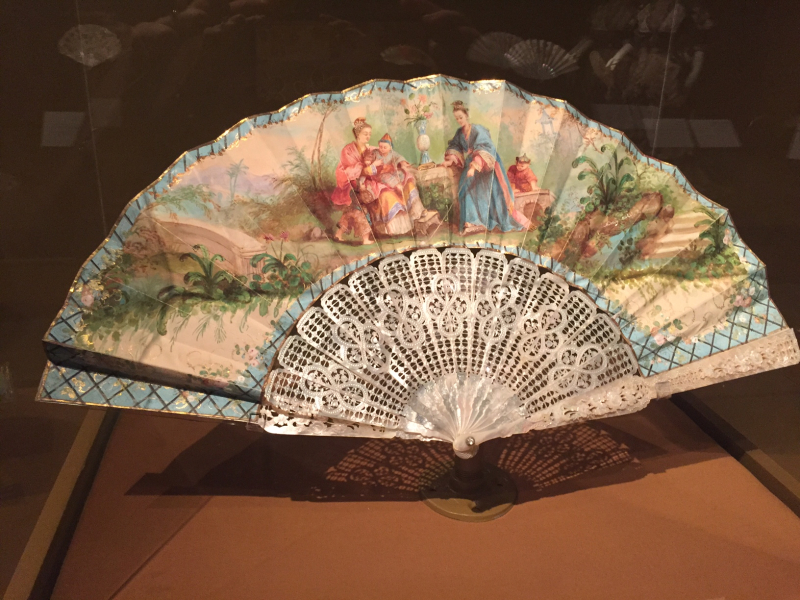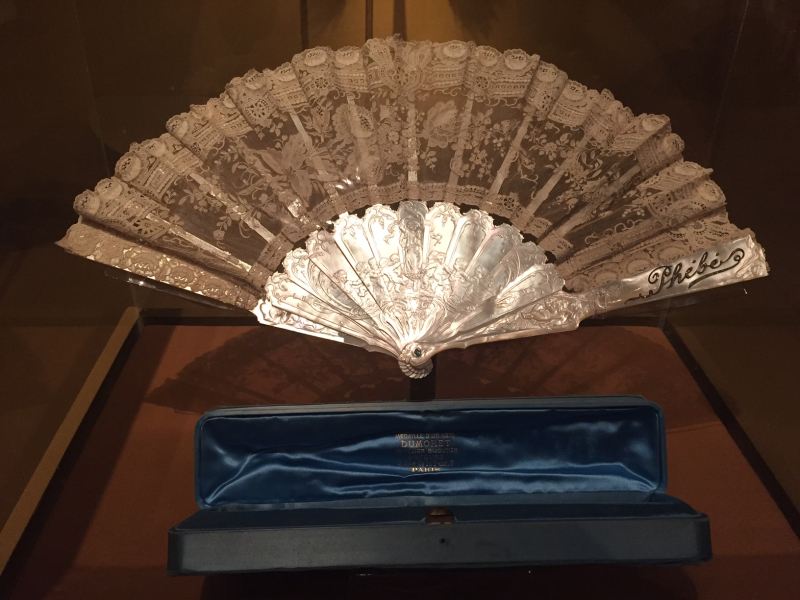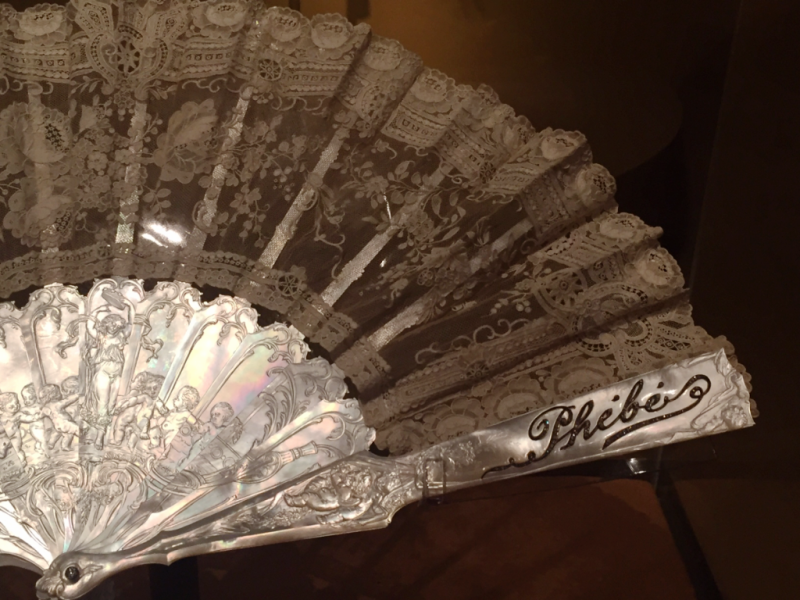Félix Alexandre
Félix Alexandre: his fans were called “the richest of any exhibited”[1] at London’s 1851 Crystal Palace Exposition; they were commissioned and carried by European royalty, and painted by the artistic masters of the 19th century. His fans represented a lifestyle of luxury, ornate works of art that communicated the status and wealth of their owners. Today, fans bearing his signature reside in museums around the world, and two examples are currently on display in the FIDM Museum exhibition A Graceful Gift: Fans from the Mona Lee Nesseth Collection.
Little is known about the early life of this gifted artist. He was born November 23, 1823 in Paris; records indicate he began his career painting and designing textiles and wallpaper.[2] He joined the house of Desrochers in 1849 as a fan painter specializing in flowers. After marrying M. Desrochers’ daughter, he took over the business and started manufacturing fans that were quickly recognized as the finest in the world.[3] His reputation was further buoyed when the glamorous and fashionable Empress Eugenie of France began carrying his fans, which sparked a devoted royal following that included Queen Victoria, Queen Louise of the Netherlands, the Queen of Spain, and Empress Maria of Russia. Alexandre’s work was prominently displayed in the fan pavilions at the 1862 World Exhibition in London and the 1867 Paris Exposition Universelle, prompting additional royal commissions.[4]
 Attributed to Félix Alexandre, Artist
Attributed to Félix Alexandre, Artist
Marguerite-Fanny Dubois-d'Avesnes, Painter
France, c. 1855-65
Mother-of-pearl & parchment
2016.975.1
Paris in the second half of the 19th century was a particularly luxurious time. As Baron Haussmann designed the city’s wide boulevards, the Parisian upper class spent their nights attending operas, extravagant dinners, stately weddings, and evening balls – all of which required bespoke fans to complete a lady’s ensemble.[5] Though Alexandre was one of many favored éventaillistes (the equally celebrated Maison Duvelleroy was perhaps his largest competition), he stood out as a designer dedicated to l’art d’éventail: the art of the fan.
 Félix Alexandre, Artist
Félix Alexandre, Artist
Dumoret, Jeweler
France, c. 1875-85
Mother-of-pearl, point de gaze lace, gilded silver & diamonds
2013.975.2AB
Fan-making in the 19th century was a trade that combined the work of several talented artisans; painters created small vignettes on fan leaves, carvers sculpted reliefs into mother-of-pearl sticks and guards, jewelers inlaid precious gems, and mounters carefully brought all the pieces together. Alexandre employed the best craftsmen, and he was particularly known for enlisting well-respected artists to paint for his fans. An 1855 edition of The Ladies Companion and Monthly Magazine states that Alexandre originated a new style of modern fans for the 19th century, and indeed, “the most celebrated painters have lent their aid to the executions of M. Alexandre’s project.”[7] Edouard Moreau, known for his exquisite miniature tableaus, and society painter Jean-Dominique Ingres both worked with Alexandre, bringing even more acclaim to the fan-maker.
A point de gaze lace Alexandre fan with its matching blue silk box is centrally displayed in the Graceful Gift gallery. Mona Lee Nesseth purchased this fan almost ten years ago – in fact, it was her first gift to the FIDM Museum, and the object that started her comprehensive collection and subsequent donation to our institution. In previous blog interviews, Nesseth recalls spotting the fan in a coin dealer’s booth at the annual Las Vegas Antique Jewelry show. She admired the lace and intricate mother-of-pearl carving, but almost did not purchase it because of the prominent inscription: the side guard is personalized with the name ‘Phébé’ spelled in diamonds. It was only later that Nesseth discovered this rare fan belonged to Phoebe Hearst, philanthropist and education advocate, member of the legendary publishing dynasty, and mother to William Randolph Hearst. It is an incredible example of Alexandre’s work, and an object with a remarkable provenance.
We invite you to visit our galleries to view the acclaimed work of Félix Alexandre, royal éventailliste, before A Graceful Gift closes this Saturday, July 2.
[1] Exhibition of the Works of Industry of All Nations, 1851: Reports by the Juries. Great Britain Commissioners for the Exhibition of 1851. Via Google Books, page 1494.
[2] Helene Alexander, Alexander: Fan Maker (Greenwich, London: The Fan Museum, 2012), 8.
[3] Ibid., 9.
[4] Ibid., 12.
[5] Ibid., 10.
[6] “A Blond Tortoiseshell and Lace Fan, Alexandre, 19th Century,” Sothebys.com, 8 November 2012: http://ow.ly/4BI5301Pfrt.
[7] The Ladies Companion and Monthly Magazine (Vol. VII, 1855, p. 328), as quoted in Alexander, page 10.
